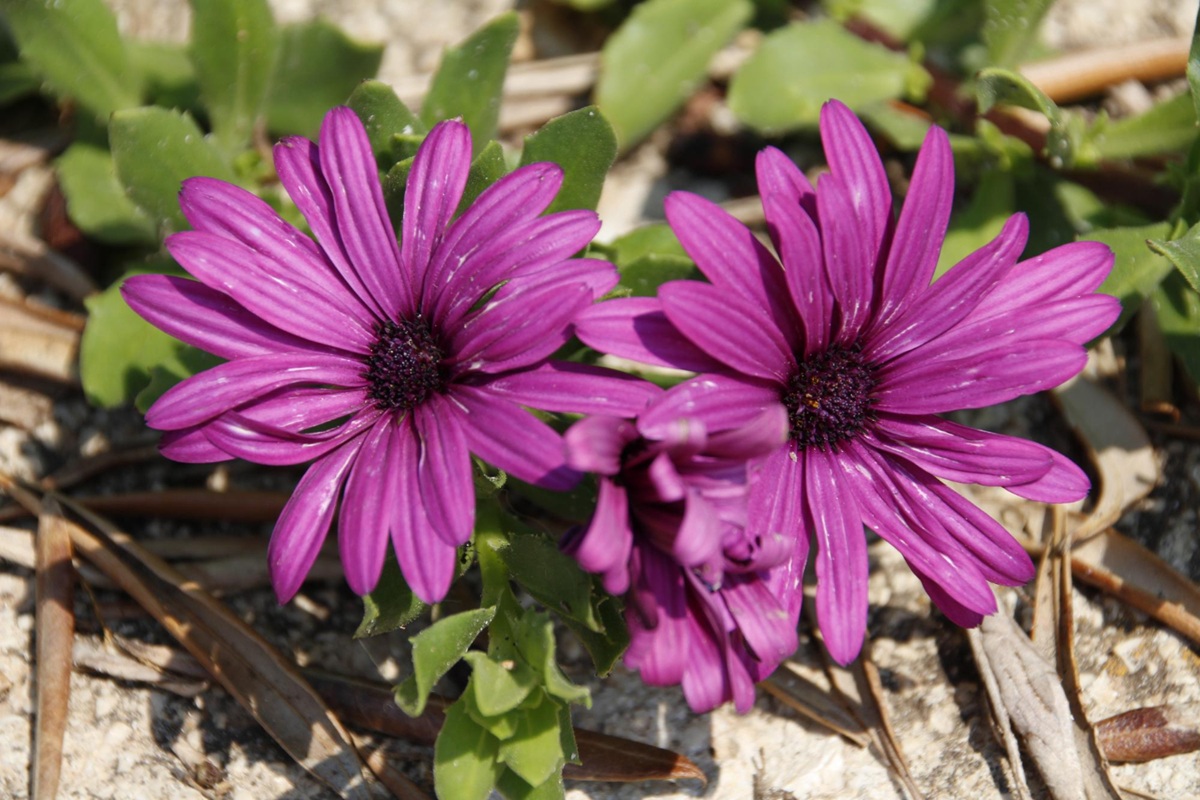Garden borders can often be a nightmare for amateur gardeners. Too little water, and the plants wilt; too much water, and weeds immediately start to sprout. Would you like a simple solution to enhance your outdoor spaces with minimal effort?
If so, discover the Dimorphotheca, also known as the Cape Daisy. This beautiful and resilient star-shaped flower could become your essential ally in the garden for the upcoming seasons.
A star plant from South Africa
Native to Southern Africa, this lovely flower belongs to the Asteraceae family. Its scientific name varies depending on the species: Dimorphotheca sinuata or Dimorphotheca ecklonis.
In its natural habitat, it flourishes spontaneously in warm and dry climates, making it a perfect candidate for our gardens facing similar conditions.
The main charm of the Dimorphotheca lies in its abundant star-shaped blooms, which have a notable size, ranging from 5 to 8 cm in diameter. This distinctive arrangement makes these flowers easily recognizable, with petals radiating around a generally darker center.
Colorful variations for all tastes
Are you wondering whether the Dimorphotheca comes in only one or two colors? Think again; the options are vast!
Here are some examples of the shades offered by the Dimorphotheca sinuata variety:
- White: An elegant tone for contemporary gardens.
- Yellow: A vibrant shade that adds a lively touch.
- Orange: Ideal for injecting dynamism into flower beds.
- Pink and salmon: Soft and delicate, these colors create calming atmospheres.
- Apricot: Warm and easy to blend with your other plants.
As for the Dimorphotheca ecklonis variety, it primarily features flowers in refined colors: white, very pale blue, often with a blue or purple center.
An ideal plant for beginner gardeners
Are you just starting out in gardening? Good news: the Dimorphotheca is the perfect partner! Its easy cultivation guarantees you beautiful results with minimal effort.
Planting conditions to keep in mind
To help your flower thrive, keep these simple tips in mind:
- Exposure: Choose a well-sunny spot.
- Soil: Even poor and ordinary soil is fine, as long as it is well-drained.
- Watering: Moderate; this plant enjoys a little thirst from time to time.
- Resistance: It tolerates temperatures down to -5°C, depending on the variety.
Easy sowing and planting instructions
Sowing the Dimorphotheca is very simple if you follow the right steps at the right time:
In spring (April to May) for summer blooming or in September in temperate regions, here’s how to proceed:
- Sow the seeds on the surface without covering them (they germinate better in light).
- Lightly press and maintain reasonable humidity.
- Wait between 8 and 15 days for the young shoots to emerge.
- Space each plant about 25 cm apart to allow for proper growth.
If you prefer to plant seedlings from a nursery, install them after the last frost, maintaining the same spacing.
A flowering that renews itself automatically
What if your garden could renew itself without your help? Thanks to its ability to reseed naturally, the Dimorphotheca makes your gardening even easier. The seeds from faded flowers fall to the ground and germinate with the changing seasons without any additional effort on your part.
To encourage this natural reseeding, simply avoid cutting all the faded flowers and refrain from tilling too deeply in the autumn.
A champion of drought resistance
Climate change can create dry summers that complicate gardening. But with the Dimorphotheca, this problem is now a thing of the past. Why? Because this plant has:
- A strong and deep root system.
- Foliage covered with a fine fuzz, reducing evaporation.
- Rapid growth that allows it to complete its cycle before the heat peaks.
And to reinforce this natural resilience? Try these practical tips:
- Plant early in the season to allow roots to develop well.
- Install mineral mulch to limit evaporation.
- Water sparingly but deeply.
Where to use the Dimorphotheca in your garden?
This versatile flower adapts beautifully to various landscape uses:
As borders, it works perfectly thanks to its moderate height (about 30 to 40 cm). You can also try it in:
- Rock gardens and dry gardens.
- Containers and planters on your balconies and terraces.
- Natural gardens, in a meadow flower style.
Minimal maintenance needed
Don’t worry about maintenance! Just a few rare actions are all that’s needed, such as watering during intense drought or lightly pruning the flower stems mid-season to prolong blooming. And guess what? No fertilization required: neither fertilizers nor specific disease care.
On the disease front, you may encounter slugs enjoying the young shoots or downy mildew if humidity lingers too long. But these issues can be easily managed with inexpensive, natural solutions (appropriate mulching, eggshells, etc.).
Beauty, prolonged flowering, resilience, and minimal maintenance: indeed, the Dimorphotheca has it all!
Have you ever tried this remarkable flower in your garden? Share your experience in the comments. What results did you achieve? Feel free to share your gardening tips to optimize its cultivation! If you have questions, we’d be happy to answer them.
I’m a disabled, xennial Christ-follower, slightly off kilter (but aren’t all “ar-teeests”?).
Hope you enjoy my rantings, don’t take my sarcasm too seriously and know that comments are welcome. 🙂


Leave a Reply